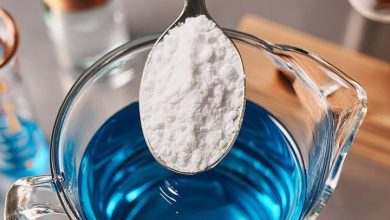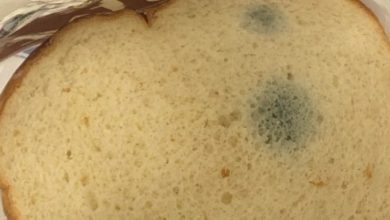NEVER Keep These Items on TOP of Your Fridge. If You’re Doing This, Stop ASAP!
The kitchen refrigerator is one of the hardest-working appliances in any home. We rely on it daily to keep our food fresh, our drinks cold, and our leftovers safe to eat. But for many people, the flat area on top of the fridge becomes an accidental storage spot. While this “extra space” can seem like a great way to clear up crowded counters, experts warn that putting certain items up there is a bad idea.
Placing the wrong things on your refrigerator can be unsafe, unhygienic, and can even damage the appliance itself. It’s important to understand why this space is critical for the fridge’s operation and what risks you run by cluttering it. If you are using the top of your fridge for storage, it’s time to “Stop ASAP!”
The main reason you need to keep the top clear is ventilation. Refrigerators work by moving heat out of the unit. The coils and vents, often located near the top and back, need open space to release this heat. Blocking these vents makes the fridge work harder, which uses more electricity and shortens the appliance’s life.
Here is a detailed look at the items you should always avoid keeping on top of your fridge—and the simple, safer alternatives.
1. Small Kitchen Appliances (Toasters, Microwaves, Air Fryers)
It’s very common for people to place appliances like a microwave, toaster, or air fryer on top of the fridge to save space on their kitchen counters. However, this creates a double problem.
- Heat & Blockage: As mentioned, the refrigerator generates heat. When you place another appliance on top, you block the critical ventilation the fridge needs. This forces the fridge to run constantly, increasing its internal temperature and risking damage to the motor.
- Safety Hazard: Both appliances will be forced to work harder, which significantly increases the risk of overheating, electrical failure, and even fire.
Better option: Keep all small appliances on a sturdy, dedicated countertop or shelf with plenty of open space around them for proper airflow.
2. Dry Food Staples (Cereals, Snacks, Bread)
Putting boxes of cereal, snacks, or bread up high might seem convenient, but the heat rising from the refrigerator is terrible for your food quality and safety.
- Spoilage: The constant, mild warmth from the appliance can cause dry food items to spoil much faster than they would in a cool cupboard. For example, “Bread becomes moldy more quickly,” and cereal boxes can lose their freshness, causing the contents to go stale or “lose their crunch.”
- Contamination: Food stored on top of the fridge is also directly exposed to kitchen grease, dust, and humidity—none of which are good for your meals.
Better option: Store all pantry staples in a cool, dry cupboard. For best results and to prevent pests, transfer these items into airtight containers.
3. Bottles of Oil, Wine, or Liquor
Many homeowners use the top of the fridge to display bottles of decorative wine, liquor, or cooking oils like olive oil. This is a very poor storage choice for two main reasons.
- Instability and Damage: The refrigerator motor causes a constant, low-level vibration. This vibration can cause bottles to subtly shift over time, increasing the risk that they will eventually tip over and break, creating a dangerous and messy cleanup.
- Loss of Quality: Heat is the enemy of quality oil and alcohol. The heat rising from the appliance can quickly affect the composition of olive oil and wine, causing them to “spoil or lose flavor” much faster than if they were kept cool.
Better option: Store all alcohol and oils in a dark, cool cabinet or a dedicated wine rack, safely away from any heat sources like the stove or the fridge itself.
4. Cookbooks or Paper Products
It might seem handy to keep your favorite cookbooks, notebooks, or even stacks of paper napkins on the fridge, but paper is flammable and easily ignites.
- Fire Risk: Since the refrigerator generates heat and has electrical cords that can sometimes spark, placing highly flammable materials like “Paper and cardboard” directly on top significantly increases the fire risk in your kitchen.
- Dirt and Mess: Paper easily attracts and holds kitchen mess. Grease and dust accumulate very quickly on paper, making it a “magnet for mess” and unhygienic.
Better option: Keep all cookbooks and important recipes on a sturdy kitchen shelf or in a drawer.
5. Heavy Pots and Pans
For kitchens with limited storage, the top of the fridge might be used for bulky items like heavy pots and pans or large serving bowls. This is a serious safety concern.
- Injury Hazard: This practice creates an immediate safety hazard because heavy items can easily shift or become unbalanced, especially when the refrigerator door is opened or “slammed shut.” Injuries from falling objects like “heavy pots are more common than you’d think.”
Better option: Store all bulky cookware in lower, dedicated cabinets or pantries for safer and much easier access.
6. Medicines or Supplements
Many people store their medicines, vitamins, or nutritional supplements high up and out of the way, but using the top of the fridge for this purpose is a big “mistake.”
- Altered Effectiveness: The heat rising from the appliance can dramatically change the effectiveness of certain medications and vitamins. Even slightly higher-than-room temperatures can “degrade sensitive ingredients,” making them less effective or possibly “unsafe” to take.
Better option: Store all medicines and supplements in a cool, dry cabinet away from direct sunlight, humidity, and heat sources.
7. Plants
While many people enjoy the look of a leafy plant sitting on top of the refrigerator, this arrangement usually causes more harm than good for both the plant and the appliance.
- Water Damage and Mold: Watering the plant can lead to water dripping down the sides and into the electrical components of the fridge, causing severe damage and creating a risk of mold.
- Plant Stress: The constant heat coming from the appliance can also stress the plant, causing it to “wilt prematurely.”
Better option: Place all household plants on a sturdy windowsill or shelf where they can get the appropriate light and be watered safely.
How Clearing the Top Protects Your Home and Appliance
The space above your fridge is not “free space”—it is a necessary zone for ventilation, efficiency, and safety. Overloading it with the wrong items not only shortens the lifespan of your fridge by forcing it to work harder but also creates unnecessary risks. These risks include fire hazards, health concerns from spoiled food, and physical risks of injury.
To keep your home safer, your food fresher, and your electricity bills lower, take five minutes today to remove anything that doesn’t belong on the top of your refrigerator.
✅ Final Tip: If you truly need extra storage space in that area, the best approach is to have a fitted cabinet or shelf professionally installed above the refrigerator. This allows you to gain extra room safely without blocking necessary vents or putting your family at risk.




